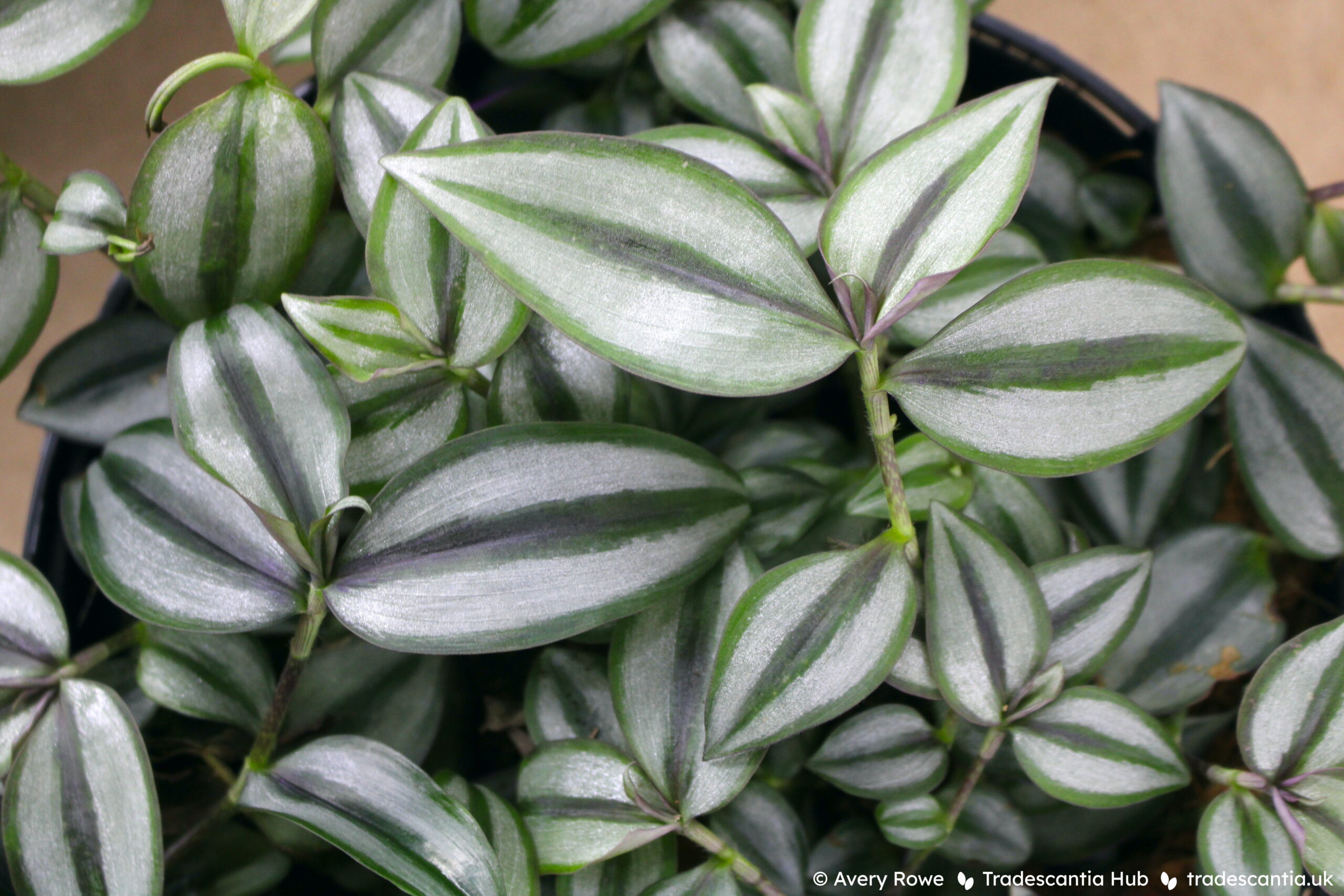Skip to: Tradescantia zebrina ‘Superba’ // Tradescantia zebrina ‘Minima’ // Tradescantia fluminensis ‘Bicolor’ // Tradescantia fluminensis ‘Viridis’ // References
There are a decent number of Tradescantia cultivars which circulate with no valid name. Some of these are newer plants which have been incorrectly labelled with an invalid or already-used name since they were introduced.
But there are a handful of cultivars which actually did have valid names once, and those names have been discarded over the years in favour of just calling the plant by the species and nothing else. That makes it very difficult to identify or refer to these plants, or to distinguish them from other cultivars of the same species.
In my research I’ve managed to track down the original names for a few of these. This article will cover four different cultivars and their old established names, so we can once again have a unique way of referring to them. All of these names will soon be published in the complete cultivar checklist. But these particular cases come up often enough that I wanted to publish some information about the names to refer to in the meantime.
Tradescantia zebrina ‘Superba’
This plant is one of the very oldest cultivated tropical tradescantias. It’s the original plant that the variegated ‘Quadricolor’ mutated from in 1879 – so the foliage of ‘Superba’ looks identical to the reverted parts of ‘Quadricolor’. The leaves are smooth, with wide shiny silver bands, and a background colour that ranges from light green to purple depending on the lighting.
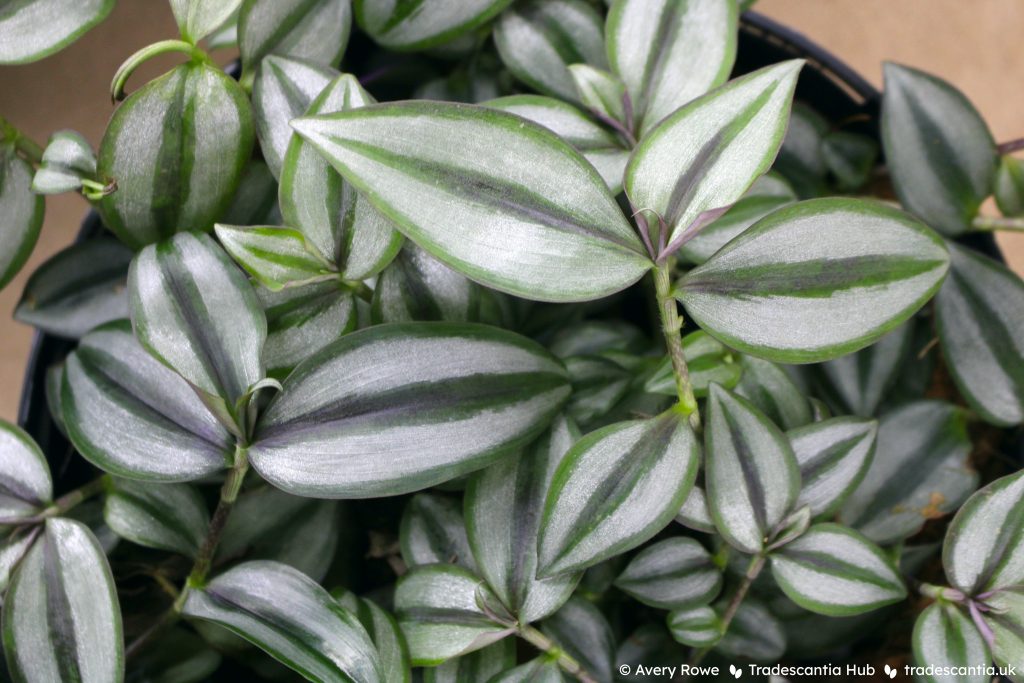
It’s been common in cultivation for over a hundred years, although recently it’s been overtaken in popularity by the similar ‘Violet Hill’ (which can be distinguished by the small warty bumps covering the leaves, and subtle differences in colour). It’s sometimes sold with the name ‘Silver Sicilian’, but that name is also used to sell various other T. zebrina cultivars so it’s very ambiguous. Among enthusiasts it’s often just labelled as T. zebrina var. zebrina, which is a scientific classification that includes all T. zebrina cultivars with regular silver-striped leaves (i.e., almost all of them).
Historically, the plant was sometimes labelled as ‘Tricolor’ (Pitcher & Manda, 1895, p. 138) – described as silver, purple, and green. This was used to distinguish it from another T. zebrina cultivar which was only silver and green (quite possibly ‘Minima’ – more on that plant in the next section). But the earliest source I’ve found so far describing this cultivar uses the name ‘Superba’ (Cascade Nursery Company, 1874, p. 34). Since neither name is in common use today, it’s sensible to discard ‘Tricolor’ because it’s been used for many other cultivars. ‘Superba’ is the earliest and least ambiguous established name, and it was established before the rule against Latin names, so it can be accepted today (Brickell et al., 2016, Art. 21.11).
Edit, 9th April 2025: Based on updated information, Superba is now treated as a cultivar group rather than a single cultivar. There are multiple clones in circulation which all have identical foliage but subtle differences in flower colour. It keeps the same name regardless of status.
Tradescantia zebrina ‘Minima’
This plant may be just as old as ‘Superba’, but I haven’t been able to confirm that yet. In the oldest sources without images, it’s difficult to be certain which of the various similar T. zebrina cultivars is being described. It has subtle zigzagged silver stripes on a background of medium green, with hints of purple in the brightest light.
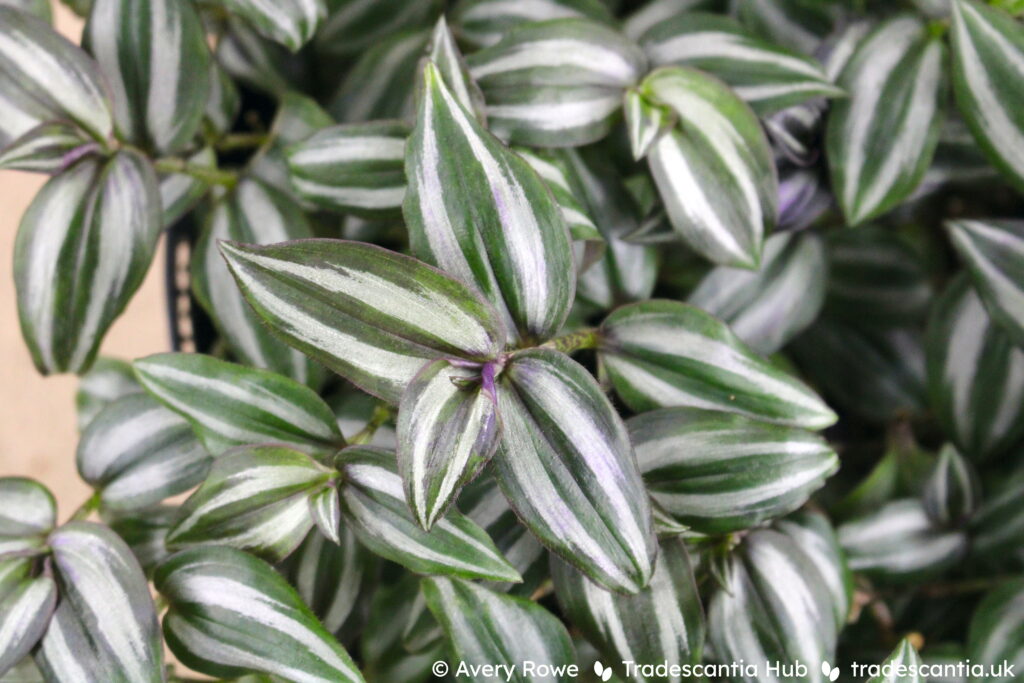
Today it’s sometimes labelled as ‘Silver Notches’, in reference to the distinctive shape of the silver bands. Some people just identify it as the species, or call it a “wild type”.
But it was actually given a published name way back in 1959, along with a photo which conclusively matches the plant we know today (Graf, 1959, p. 434, 1073). ‘Minima’ is in Latin form, but it’s also a modern word in various other languages, so it can be acccepted as a valid name (Brickell et al., 2016, Art. 21.11).
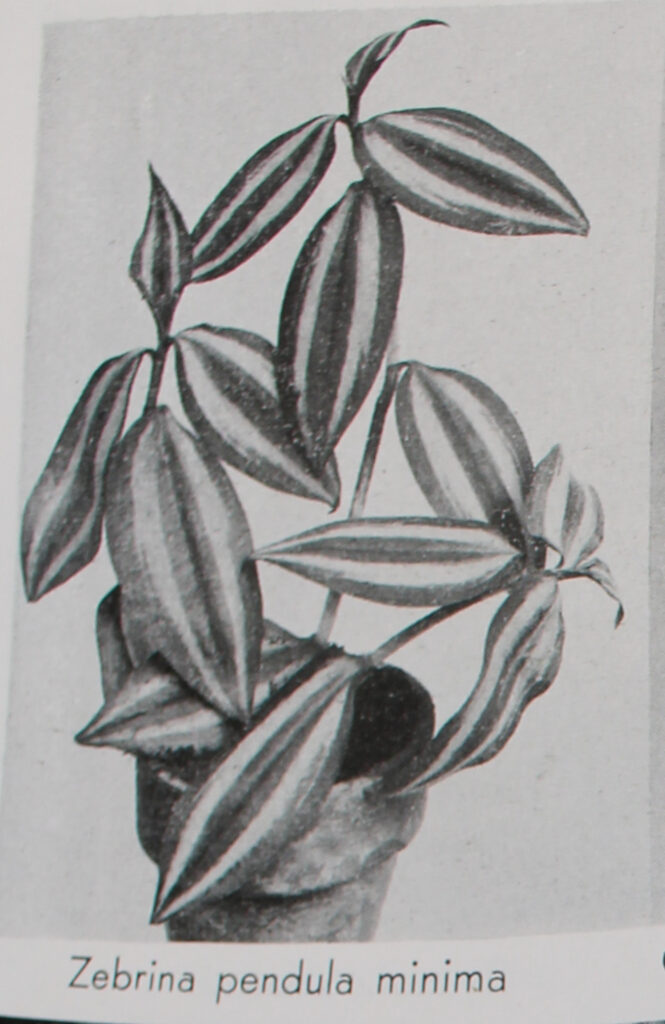
Tradescantia fluminensis ‘Bicolor’
This plant is a fast-growing creeper with solid green leaves and occasional white flowers, but its main distinguishing feature is that the underside of the leaves are shiny purple. It’s quite likely to have been collected from the wild at some point in history, but today it’s most often found in the form of reverted green stems from the variegated T. fluminensis ‘Lavender’.
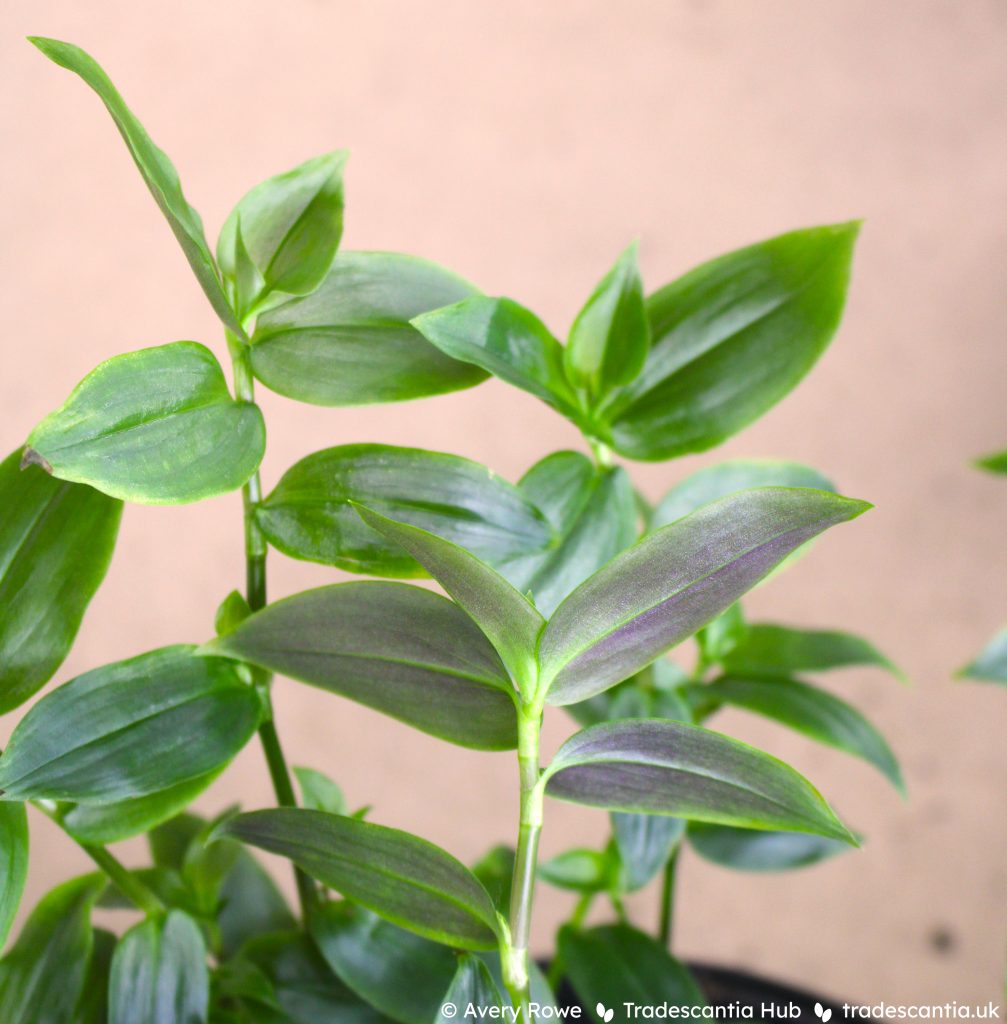
These days it’s never given a name other than the species. But it is a unique form of the species – not all plain-green T. fluminensis plants have purple leaf undersides.
It turns out that 130 years ago, there was someone who considered it distinctive enough to name (Mönkemeyer, 1897, p. 76). The name ‘Bicolor’ was published well before the rule against Latin names, so it can be accepted today to identify this cultivar (Brickell et al., 2016, Art. 21.11).
Tradescantia fluminensis ‘Viridis’
This plant is another plain-green creeper, which occasionally forms small white flowers. Unlike ‘Bicolor’, the undersides of the leaves are pale shimmery green, with no purple at all. It’s widespread as a houseplant, and it’s also often found as reverted green stems from the other variegated T. fluminensis cultivars, ‘Yellow Hill’ and ‘Variegata’.
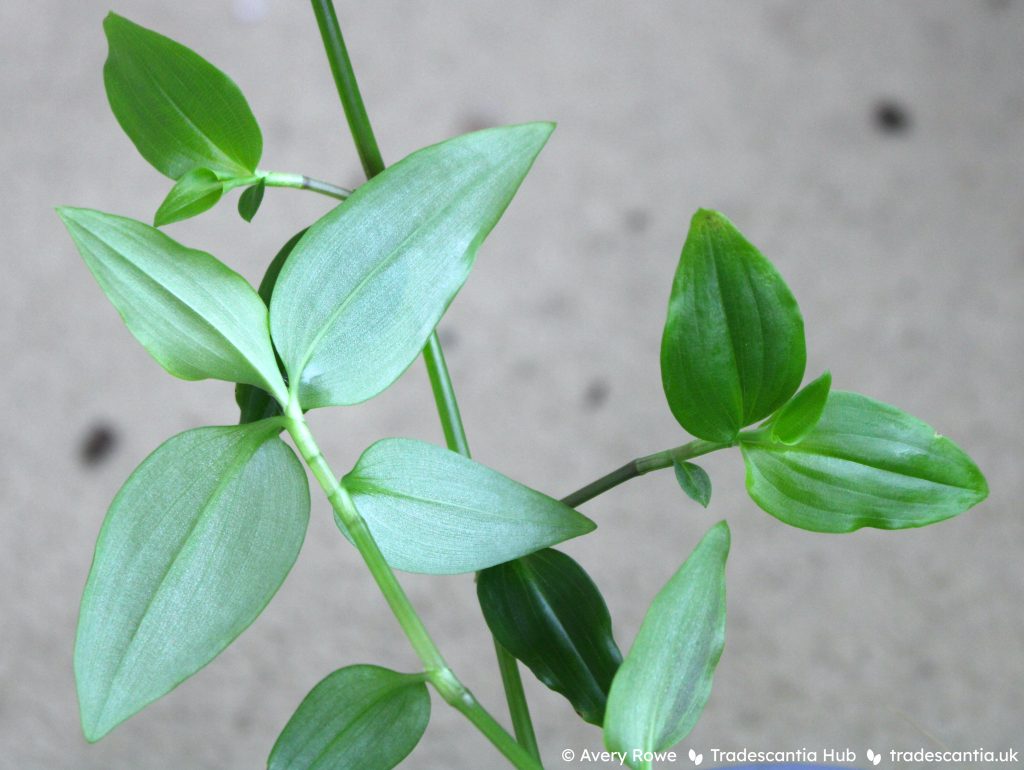
Just like ‘Bicolor’, it’s so unremarkable that today it’s never given a name beyond its species. But the fact that it’s different from ‘Bicolor’ means that it is useful for it to have a name of its own.
And way back in history, it actually was given a name of its own (Kühl, 1927, p. 317). Tradescantia viridis was often written as a species, but it was never scientifically accepted. Instead, we can now treat it as a cultivar of the valid species it actually belongs to (Brickell et al., 2016, Art. 21.6). ‘Viridis’ was again published before the rule against Latin names, so it can be accepted today (Brickell et al., 2016, Art. 21.11).
Found this article helpful?
If you want more great resources like this, you can help me keep making them with a regular payment on Patreon.
References
Cascade Nursery Company. (1874). Catalogue of New and Rare Plants. Internet Archive link.
Pitcher & Manda. (1895). [Catalogue]. Biodiversity Heritage Library link.
Mönkemeyer, W. (1897). Die Sumpf- und Wasserpflanzen [Marsh and aquatic plants]. Verlagsbuchhandlugn Paul Parey. Internet Archive link.
Kühl, O. (1927). Gartenschönheit [Garden beauty]. Internet Archive link.
Graf, A. B. (1959). Exotica 2: Pictorial Cyclopedia of Indoor Plants. Roehrs Company.
Brickell, C. D., Alexander, C., Cubey, J. J., David, J. C., Hoffman, M. H. A., Leslie, A. C., Malécot, V., Jin, X. (2016). International Code of Nomenclature for Cultivated Plants. PDF link.

